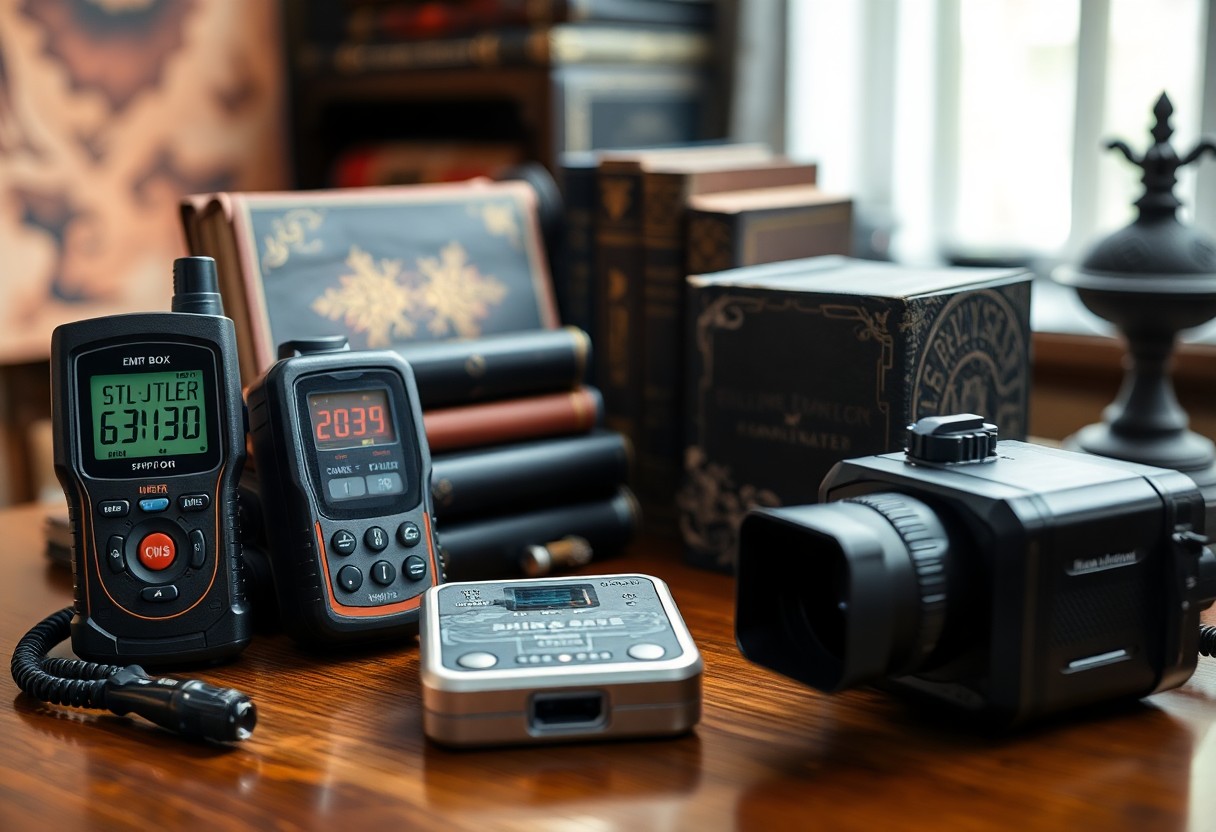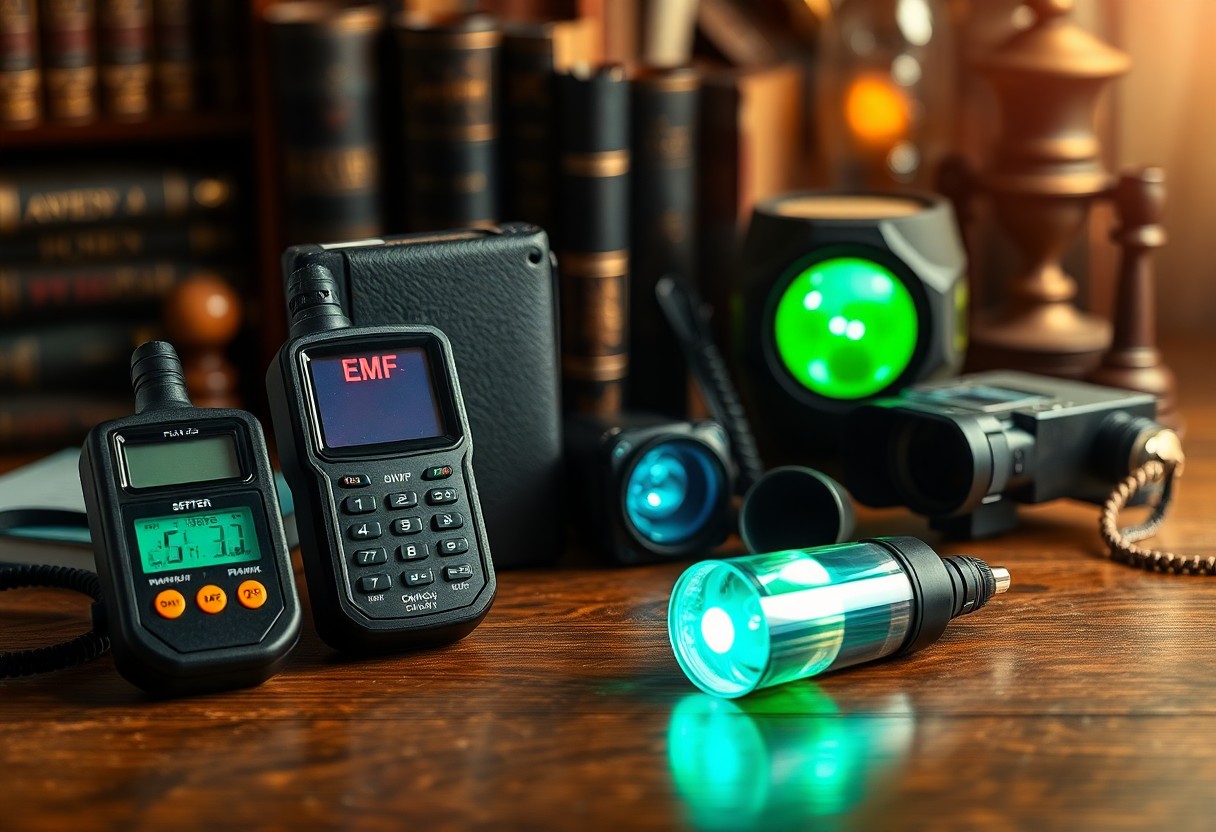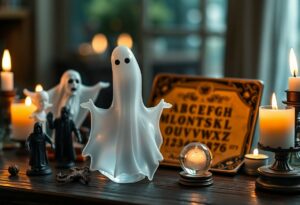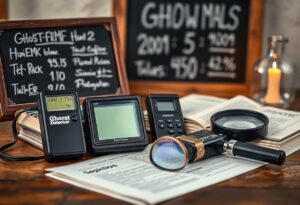There’s a captivating realm where science meets the unexplained, and you might find yourself intrigued by the phenomena of ghost sightings and supernatural experiences. This blog post probes into the psychological and environmental factors that contribute to these encounters, allowing you to explore the boundaries between reality and belief. For a deeper understanding, check out Science and the Supernatural: Exploring the Reality of … to elevate your knowledge on this fascinating subject.

Historical Perspectives on Ghost Sightings
To understand the phenomenon of ghost sightings, you must explore the historical perspectives that have shaped our views. From ancient civilizations to modern interpretations, experiences of the supernatural have long captivated human imagination. This journey leads to crucial insights into the socio-cultural factors influencing beliefs about the spectral world. For a deeper understanding, you can refer to The science of ghosts.
Ancient Beliefs and Cultural Interpretations
Historical accounts reveal that many ancient cultures believed in spirits and ghosts as integral parts of their worldview. From the Egyptians’ emphasis on the afterlife to the Greeks’ concept of shades, these interpretations highlight how societies sought to explain the unknown, often attributing spiritual significance to unexplained phenomena.
Evolution of Supernatural Phenomena in Society
Interpretations of supernatural occurrences have evolved significantly over time. You can see how societal changes, scientific advancements, and philosophical shifts have redefined your understanding of ghosts and spirits.
For instance, during the Enlightenment, rational thought began to challenge superstitions, leading to skepticism around ghostly encounters. However, in the 19th century, the rise of Spiritualism reignited public interest in communicating with the dead, blending science with the supernatural. Today, heightened interest in paranormal investigations and the influence of media continue to shape your perception of ghosts, reflecting an ongoing dialogue between the seen and unseen realms.
Psychological Explanations of Supernatural Experiences
The realm of supernatural experiences can often be interpreted through a psychological lens. You may find that factors like stress, fatigue, or even suggestibility play significant roles in how you perceive ghost sightings and other paranormal encounters. These experiences can be deeply influenced by your mental state, allowing you to interpret ordinary occurrences in extraordinary ways, often leading you to question the boundary between reality and the supernatural.
The Role of the Subconscious Mind
About your subconscious mind, it operates continuously behind the scenes, influencing your thoughts, behaviors, and perceptions. Subconscious cues and memories can evoke feelings or images that you might not consciously acknowledge. When you encounter unfamiliar environments or stressful situations, the subconscious may trigger memories or emotions linked to fears or previous experiences, prompting you to interpret these moments as supernatural.
Perception and Cognitive Biases in Ghost Sightings
Before exploring ghost sightings, it’s important to consider how your perception is shaped by cognitive biases. These biases can distort the way you interpret experiences and information, leading you to perceive patterns or connections that may not actually exist. By understanding these perceptual filters, you can gain insight into how your mind may influence your belief in the supernatural.
It is vital to recognize that cognitive biases such as pareidolia and confirmation bias can significantly impact your perception of ghost sightings. Pareidolia leads you to see faces or figures in random patterns, and confirmation bias may cause you to focus on evidence that supports your beliefs while disregarding contrary information. These psychological factors can create a compelling narrative around supernatural experiences, effectively blending the line between reality and imagination in your mind.

The Science of Haunting: Environmental Factors
It is widely believed that various environmental factors can contribute to ghost sightings and supernatural experiences. Researchers highlight how certain conditions may induce feelings of unease or hallucinations. Key elements include:
- Temperature fluctuations
- Air quality issues
- Infrasound levels
- Electromagnetic fields
Recognizing these factors can help you better understand the potential influences on your perception of the paranormal.
Infrasound and Its Effects
To comprehend the impact of infrasound, you need to know that it consists of low-frequency sound waves below the range of human hearing. These frequencies can induce feelings of anxiety or discomfort, leading to seemingly strange phenomena. Studies suggest that infrasound can be produced by natural events, such as earthquakes or winds, and can be pervasive in certain environments. What you might attribute to a ghostly presence could very well be a physiological response to infrasound exposure.
Electromagnetic Fields and Human Perception
At the intersection of science and the supernatural, electromagnetic fields (EMFs) frequently come up in discussions of ghostly encounters. Researchers propose that fluctuations in EMF levels can alter your brain’s electrical activity, potentially causing sensations that mimic paranormal experiences.
Electromagnetic fields are generated by various sources, including power lines, appliances, and even electronic devices. Studies have shown that exposure to certain EMF levels can lead to feelings of disorientation or symptoms of anxiety, which may lead you to interpret your surroundings as eerie or haunted. In some cases, the human brain may misinterpret these sensations as paranormal activity, prompting you to consider connections that are influenced more by environmental factors than any actual supernatural occurrence.
Case Studies: Notable Ghost Sightings
Now, you will explore some of the most infamous ghost sightings and supernatural occurrences that have intrigued both skeptics and believers. These case studies showcase unique narratives, often backed by eyewitness accounts and varying degrees of evidence:
- The Amityville Horror (1975): A family claimed to experience terrifying paranormal events in their new home, leading to widespread media coverage.
- The Ghosts of Gettysburg: Numerous visitors report ghostly encounters in battle sites, supported by hundreds of documented sightings.
- The Bell Witch (1817-1821): This case involved a poltergeist that allegedly haunted the Bell family, with various witnesses documenting the events over several years.
- The Enfield Poltergeist (1977-1979): A family in London reported strange noises and physical disturbances, leading to extensive investigations by paranormal researchers.
The Amityville Horror
Around 1975, the Lutz family moved into a house in Amityville, New York, only to experience a series of chilling events, which they claimed were caused by supernatural forces. These included strange smells, cold spots, and unexplained noises, all leading to a rapid decline in their mental stability. The family’s haunting story became a sensational topic worldwide, giving rise to books and films, reigniting discussions about the potential for ghostly encounters in residential areas.
The Winchester Mystery House
The Winchester Mystery House is a sprawling Victorian mansion in San Jose, California, that has been the subject of numerous ghost stories and supernatural theories. After the death of her husband and child, Sarah Winchester believed that the spirits of those killed by Winchester rifles haunted her. To appease these spirits, she begined on a continuous construction project for 38 years, resulting in a maze-like structure with staircases leading to nowhere and doors opening into walls.
Case studies such as The Winchester Mystery House do more than intrigue; they test your understanding of reality. The house’s peculiar architecture raises questions about the influence of grief and belief systems on the experience of the paranormal. As you explore this site, you may find it evokes a sense of mystery and wonder—an uncanny testament to one woman’s desperate attempt to find peace amidst personal tragedy and the haunting that she believed followed her. The mansion continues to attract visitors, intrigued by its history and the possibility of ghostly encounters within its walls.
The Role of Technology in Investigating the Supernatural
After years of skepticism, technology has become an integral part of exploring the supernatural. Modern tools like infrared cameras, audio recorders, and electromagnetic field (EMF) meters are utilized by enthusiasts and professionals alike to document and analyze unexplained phenomena. These advancements allow you to capture evidence that might support or debunk ghost sightings and enhance your understanding of paranormal activities.
Paranormal Equipment and Methodologies
Beside traditional methods like EVP (Electronic Voice Phenomena) sessions, contemporary investigators now employ a variety of sophisticated equipment. Items such as spirit boxes, thermal imaging cameras, and motion sensors are at your disposal, enabling you to gather real-time data and enhance your investigation. Using these tools, you can systematically analyze any supernatural claims and develop a more thorough understanding of the phenomena you’re exploring.
The Impact of Social Media and Documentaries
Technology has transformed how paranormal phenomena are shared and discussed. Social media platforms and documentaries allow you to connect with like-minded individuals and access a wealth of information. You can share your experiences and findings, creating a community focused on the supernatural that thrives on collaboration. These channels have popularized ghost hunting, increasing both interest and participation in the field.
Investigating the paranormal has been significantly influenced by the rise of social media and documentary filmmaking. You can find countless videos, podcasts, and social media groups dedicated to ghost hunting, providing you with firsthand accounts, tips, and techniques from fellow enthusiasts. This wealth of shared knowledge and experience helps demystify the phenomena and encourages you to engage in your own explorations, making the pursuit of understanding the supernatural more accessible than ever.
Skepticism and Debunking the Paranormal
For those exploring the unknown, skepticism serves as an necessary tool in discerning fact from fiction. Many enthusiasts turn to works like Ghosts Unveiled: The Science Behind Paranormal … to gain insight into the scientific perspective on ghost sightings. Skepticism encourages you to question experiences and seek evidence before drawing conclusions, fostering a mindset open to rational explanations and debunking myths surrounding the supernatural.
Scientific Rigor Against Anecdotal Evidence
Against the backdrop of personal stories and anecdotal experiences, scientific rigor demands verifiable evidence. This distinction is vital for understanding the limits of subjective accounts, which often lack the reproducibility and objectivity that empirical research requires. You should prioritize studies backed by data that can withstand scrutiny, ensuring that your exploration into the paranormal is grounded in credible information.
Prominent Skeptics and Their Arguments
On this topic, prominent skeptics such as James Randi and Carl Sagan have championed the cause of critical thinking. Randi, in particular, offered a million-dollar challenge to anyone who could demonstrate paranormal abilities under controlled conditions. Their arguments focus on the lack of consistent, empirical evidence supporting ghostly phenomena, encouraging you to look beyond anecdotal experiences and consider logical explanations for such encounters.
Further, exploring these prominent skeptics’ viewpoints can illuminate the strategies used to debunk supernatural experiences. For instance, Randi’s advocacy for controlled experiments highlights the importance of scientific methods in evaluating claims. You may find it insightful to consider how cognitive biases like pareidolia and confirmation bias play roles in shaping your perceptions of the paranormal. By understanding these concepts, you can cultivate a more analytical and reasoned approach when encountering tales of ghost sightings and other supernatural claims.
Summing up
As a reminder, exploring the science of ghost sightings and supernatural experiences invites you to consider the interplay between psychology, environmental factors, and cultural beliefs. By examining the evidence and understanding the human psyche, you can better navigate your own perceptions and experiences in this fascinating realm. Whether you are a skeptic or a believer, appreciating the complexity of these phenomena enriches your perspective on the enigmatic nature of our reality.



